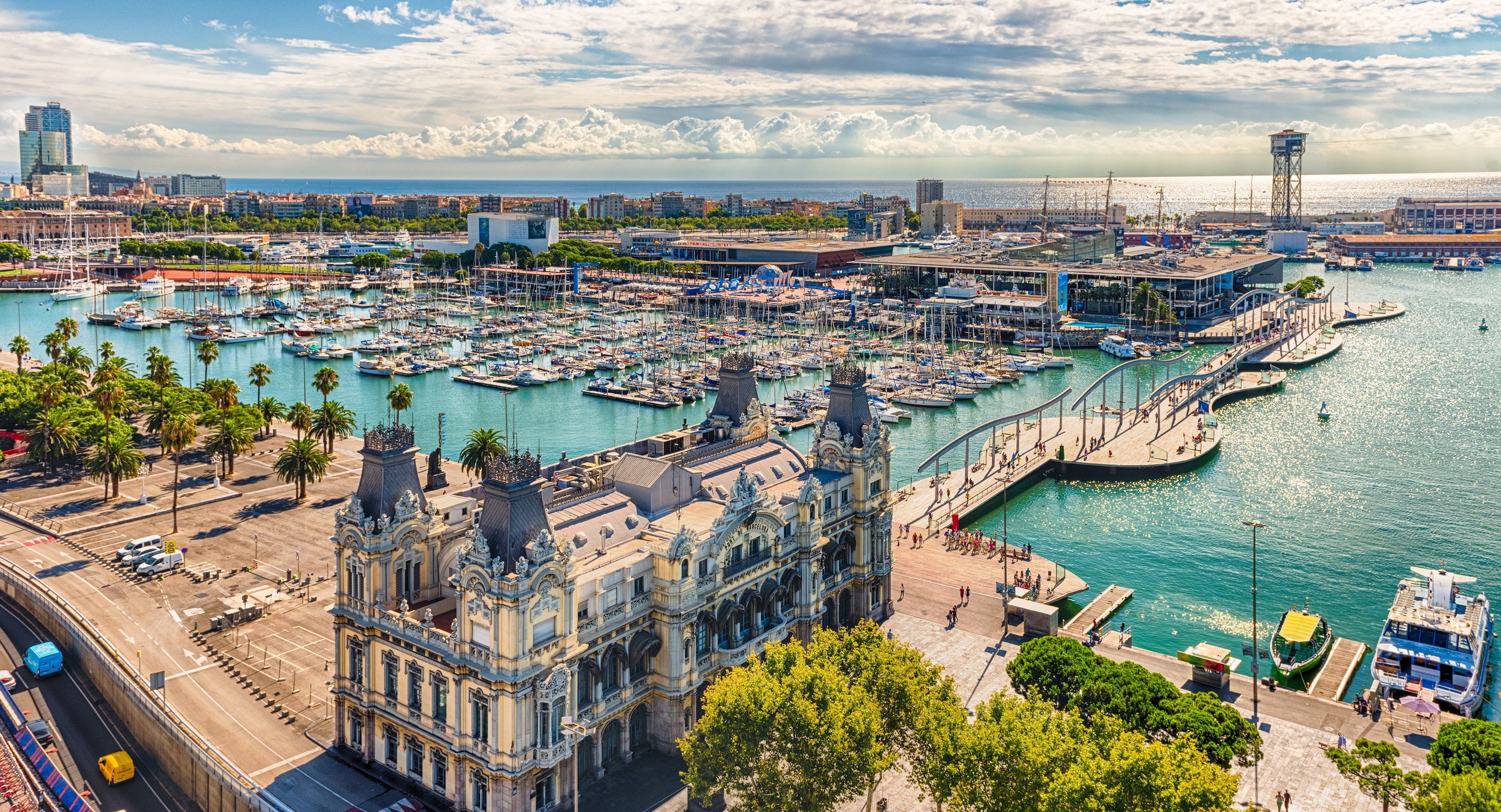
Tennis in
Spain
When somebody says Spain to you, what words spring to mind? Sure, sea, beaches, Real or Barca...but it is hard to imagine that one of those words wouldn´t be tennis or Rafa Nadal. Spain has developed into a leading tennis nation in the past few decades. The country has gone from having very few players at the top of the game to having multiple slam champions, a handful of world No.1s, and a reputation for being one of the world’s premier tennis education providers with its academies and world renowned coaches. We take a look at what makes Spain such a great tennis country.
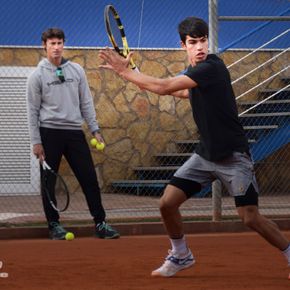
JC Ferrero Equelite Sport Academy
Home of tennis champions;Top-tier holistic training
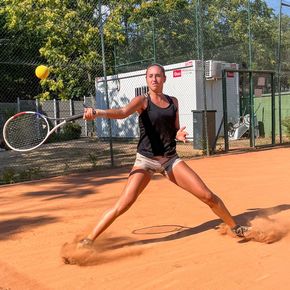
GA Tennis Academy
Elite player development;Humility & Sportmanship
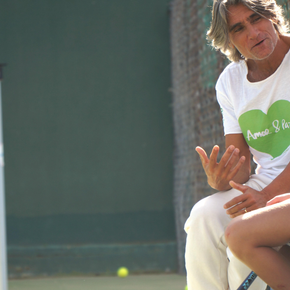
Amor & Paz Tennis School
Holistic Training Approach;Self-love, respect, balance
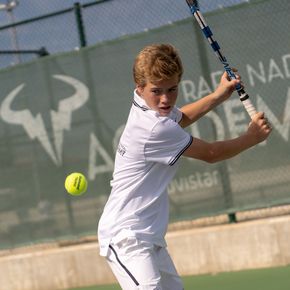
Rafa Nadal Academy by Movistar
Train like a Grand Slam pro;This is where Rafa began
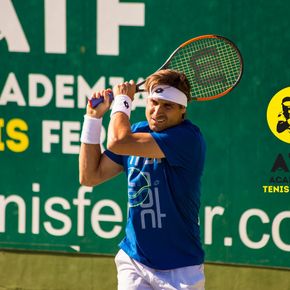
Academia Tenis Ferrer
Train by the Spanish coast;Focused on junior success
History of tennis development in the country
Spain is currently one of tennis’ most successful nations, however this was not always the case. Before 1961, Spain only had Manuel Alonso as a slam finalist (Wimbledon, 1921). But, Spain has made up for its slow start to the top of the world’s finest tennis nations. Manuel Santana won his first slam in 1961 and opened the gates for the likes of Andrez Gimeno, Manuel Orantes, Sergi Bruguera, Arantxa Sanchez Vicario, Conchita Martinez, Carlos Moya and Rafa Nadal. As the Spanish economy opened up and grew in the second half of the 20th century, tennis became more accessible, more public courts opened up, and it was only natural that a country with its mild climate and sports loving population would end up alongside France, the UK, the USA, Australia and Germany as one of tennis history’s richest nations.
Famous players
Rafa Nadal is Spain’s most celebrated player, and a world sporting icon. He won his first slam aged 19 at Roland Garros ‘05 and after Roland Garros ‘20, he holds 20 slams, a record he shares with Roger Federer and Novak Djokovic. Before Nadal, the country’s most accomplished player in the Open era was Aranxtha Sanchez Vicario who won four slams (Roland Garros ‘89, ‘91, ‘94, US Open ‘94) and was world No.1. Other successful players have been Manuel Orantes, Manuel Santana, Carlos Moya, Sergi Brugeura, Juan Carlos Ferrero, Conchita Martinez, Garbine Muguruza, Alberto Costa, all who have or finished their careers with Grand Slam titles under their belt. Recently, Spain has proven to be one of the most dominant tennis countries in professional rankings. In the men’s game, at the end of 2020, Rafa Nadal, Roberto Bautista Agut and Pablo Carreno Busta were all ranked in the top 20 and Spain had a total of nine players in the top 100.
Did you know?
Rafa Nadal as a youngster was deciding between tennis and football, in which he was also excelling. In fact, Rafael´s second uncle Miguel Ángel played for FC Barcelona. Even more of a surprise is that Rafa himself is a very avid fan of Real Madrid.
Successes of the national teams
As a nation, Spain has had great success in various team competitions. Spain has won the Davis Cup six times (‘00, ‘04, ‘08, ‘09, ‘11, ‘19). It has also been Fed Cup Champion five times (91, 93, 94, 95, 98). In addition, Rafa Nadal won Olympic Gold in Singles and Doubles with Marc Lopez at Beijing ‘08, Sergi Bruguera won Silver (Atlanta ‘96). Conchita Martinez has three medals, Arantxa Sánchez Vicario has silver and a bronze in both singles and doubles and her brother Emilio Sánchez Vicario won doubles silver with his partner Sergio Casal at the 1988 Olympic Games in Seoul.
Tournaments in the country
Spain hosts some of the world’s most well-known and important tennis tournaments. The ATP 500 tournament is held in Barcelona in April at the Real Club de Tenis and the ATP 1000 event, combined with the WTA Premier tournament, is held in Madrid in May at the cutting edge Caja Magica. Both of those tournaments are played on Clay. Spain also has an ATP 250 and WTA grass court tournament in Mallorca in June. The country, in addition, hosted the WTA championships in Madrid in 2006-2007. As well as this, a men’s indoor Masters event was held in Madrid up until 2008. The Davis Cup is also currently held in Spain in its controversial but successful new format as a week long event held indoors. There was much debate how fair it was to host the event in one country, but with Nadal leading the team, the Spaniards were always going to be one of the favorites to lift the trophy wherever it was played.
Training system
Spain’s success has been the subject of many tennis fans’ discussions and even the subject of popular tennis books. In 2014, Chris Lewit wrote his book Secrets of Spanish Tennis on the subject. According to Lewit, Spain’s success is due to its “sporting culture with a strong club system to develop players, an extensive tournament structure, and a high level of coaching.” Lewitt adds that, “In general, Spanish coaches tend to work with a similar philosophy and method around the country, namely, emphasizing consistency and control, good footwork, endurance, developing a forehand weapon, solid defense, and an indefatigable spirit... players are taught from a young age to be fighters and to ‘suffer’ on the court.” These qualities are ones which separate Spanish players apart from other nationalities on their preferred surface of Clay. The surface demands great athleticism, a fundamental aggressive game and strong defense. It’s no secret that Spanish players have thrived on Clay more than any other surface (Bruguera, Costa, Moya, Ferrero all won their only slams at RG). But, Spanish tennis is more than just Clay tennis - its players have transferred those skills refined on Clay to other surfaces and slams, too.
- Conchita Martinez surprised the tennis world when she won Wimbledon in 1994.
- Meanwhile, Aranxtha Sanchez Vicario upset Steffi Graf to win the US Open ‘94 and contested two Wimbledon finals in the mid 90s.
- Most impressively of all, Rafa Nadal has won the career slam.
- In 2019, Spain, led by Nadal, won the Davis Cup indoors.
- Perhaps the biggest shock of all was when Alex Corretja won the ‘98 ATP finals indoors in Hannover beating none other than Carlos Moya in the final in five sets. Lewit also highlights something unique about Spanish training methods which might also offer some insights into why Spain has managed to distinguish itself from other tennis nations. Lewitt told us, “In Spain, small group lessons with 2:1 player to coach ratio are the favored approach, as compared to larger group training common in other countries. Private lessons are not encouraged in Spain due to the low ratio in group classes.” There are of course, some things about Spanish tennis’ success which are not so secret. Spain has a climate which means tennis can be played all year round. It also has a recent culture of tennis sporting success with Rafa Nadal as one of the country’s most recognisable figures and a Spanish icon. The sport has a high profile, thanks to Nadal’s achievements and popularity, and attracts a lot of young talent to the game even though it is competing with more accessible team sports such as football and basketball. Nadal is also running a very well known tennis academy and joins his compatriot Juan Carlos Ferrero in this achievement. Manuel Santana also opened his own academy in Marbella. Lewit highlights how “many former professional players in Spain have chosen to give back to the game and to younger players rather than leaving the sport.”
Tennis academies
Spanish tennis academies have a reputation as being some of the best in the world which attract both local and international talent. Both Marat Safin and Andy Murray were sent to tennis academies in Spain from the age of 14 with Murray attending the highly regarded Sanchez Casal Academy in Barcelona.
Tennis academies in Spain tend to be located in Barcelona suburbs, Valencia or Mallorca. Many of them are owned by current and former great Spanish players. Rafa Nadal has his academy in Mallorca, the Rafa Nadal Tennis Academy. Juan Carlos Ferrero, a former No.1 and the 2003 Roland Garros champion, also runs a tennis academy, the JC Ferrero Equelite Sport Academy, which is located near Valencia.
In the Barcelona area, apart from the mentioned Sanchez Casal Academy, there are plenty of other high-performance tennis academies like the Barcelona Tennis Academy. But not only seaside resorts have their academies. The area of Madrid also offers a number of opportunities for quality training, one of which is the GA Tennis Academy.
Spain also has numerous high-quality coaches. Some of its coaches include Toni Nadal, Luis Bruguera and Fer Vicente. Vicente coached Andrei Rublev in 2020, a season in which the Russian was one of the most successful players with five tournament wins and finishing the year in the top 8.
Looking for training options in Spanish tennis academies? Don´t hesitate to contact us at info@tennis-academies.com.

tennis-academies.com
Tell us your story
Every tennis player and every family has different needs for training or accommodation. Tell me your tennis story and I will prepare a tailor-made package for you.
Get customized offerLooking for tennis academies in Spain?

